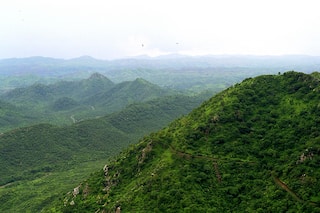Delhi-NCR Pollution: Centre Doubles Fines On Stubble Burning. Check New Penalty Charges
To combat worsening air quality, the Indian government has doubled penalties for farmers engaging in stubble burning.

Amid concerns over the rapidly deteriorating air quality in Delhi and the National Capital Region (NCR), the Bharatiya Janata Party-led Central government on Thursday doubled the penalties imposed on farmers for stubble burning, the practice of intentionally setting fire to the straw left behind after harvesting grains like rice and wheat.
The government announced the Commission for Air Quality Management in the National Capital Region and Adjoining Areas (Imposition, Collection and Utilization of Environmental Compensation for Stubble Burning) Amendment Rules, 2024 will come into effect from Thursday.
Under the new rules, a farmer with less than two acres will have to pay an environmental compensation of Rs 5,000 if found guilty of farm fire incidents. Previously, the fine amount was Rs 2,500.
Commission for Air Quality Management in National Capital Region and Adjoining Areas (Imposition, Collection and Utilization of Environmental Compensation for Stubble Burning) Amendment Rules, 2024 to come into effect.
— ANI (@ANI) November 7, 2024
Farmer having an area of land of less than two acres shall… pic.twitter.com/OBDD3pEQH2
Furthermore, a farmer having an area of land of two acres or more but less than five acres will have to pay an environmental compensation of Rs 10,000, while those having an area of land of more than five acres will have to pay an environmental compensation of Rs 30,000.
Delhiites woke up to toxic air on Thursday morning as the air quality continued to be in the 'very poor' category. While the Air Quality Index at 9 am stood at 367, nine stations -- Anand Vihar, Ashok Vihar, Bawana, Jahangirpuri, Mundka, Rohini, Sonia Vihar, Vivek Vihar, Wazirpur -- reported air quality in the severe category, according to the Central Pollution Control Board (CPCB).
According to AQI classifications, a 0-50 range is considered good, 51-100 satisfactory, 101-200 moderate, 201-300 poor, 301-400 very poor, and 401-500 severe.
Severe pollution levels are a recurring problem in the Delhi-NCR region during the winter months. It is driven by a combination of factors, such as low wind speeds, dropping temperatures, high moisture levels and the presence of pollution particles that act as surfaces for condensation.






































